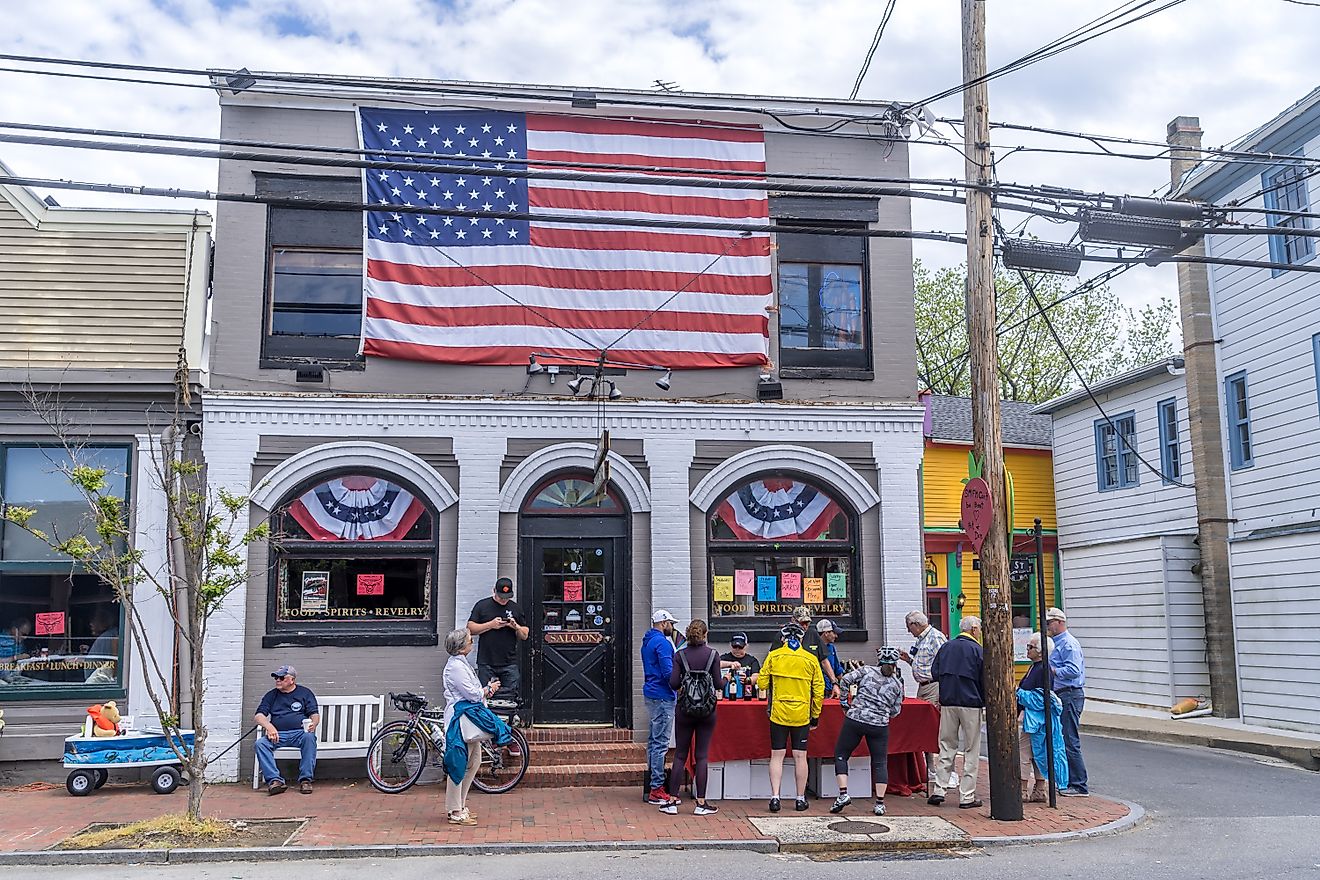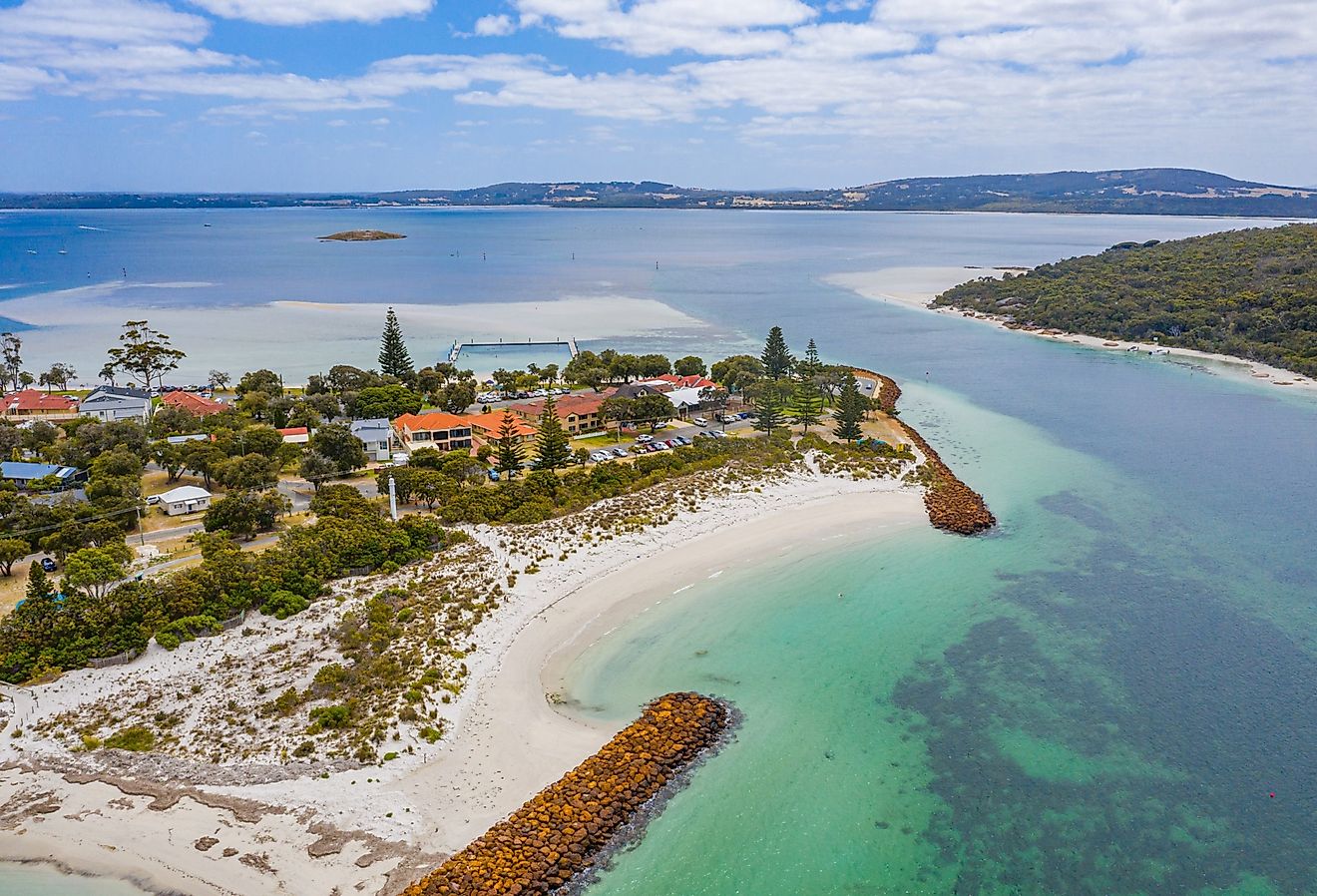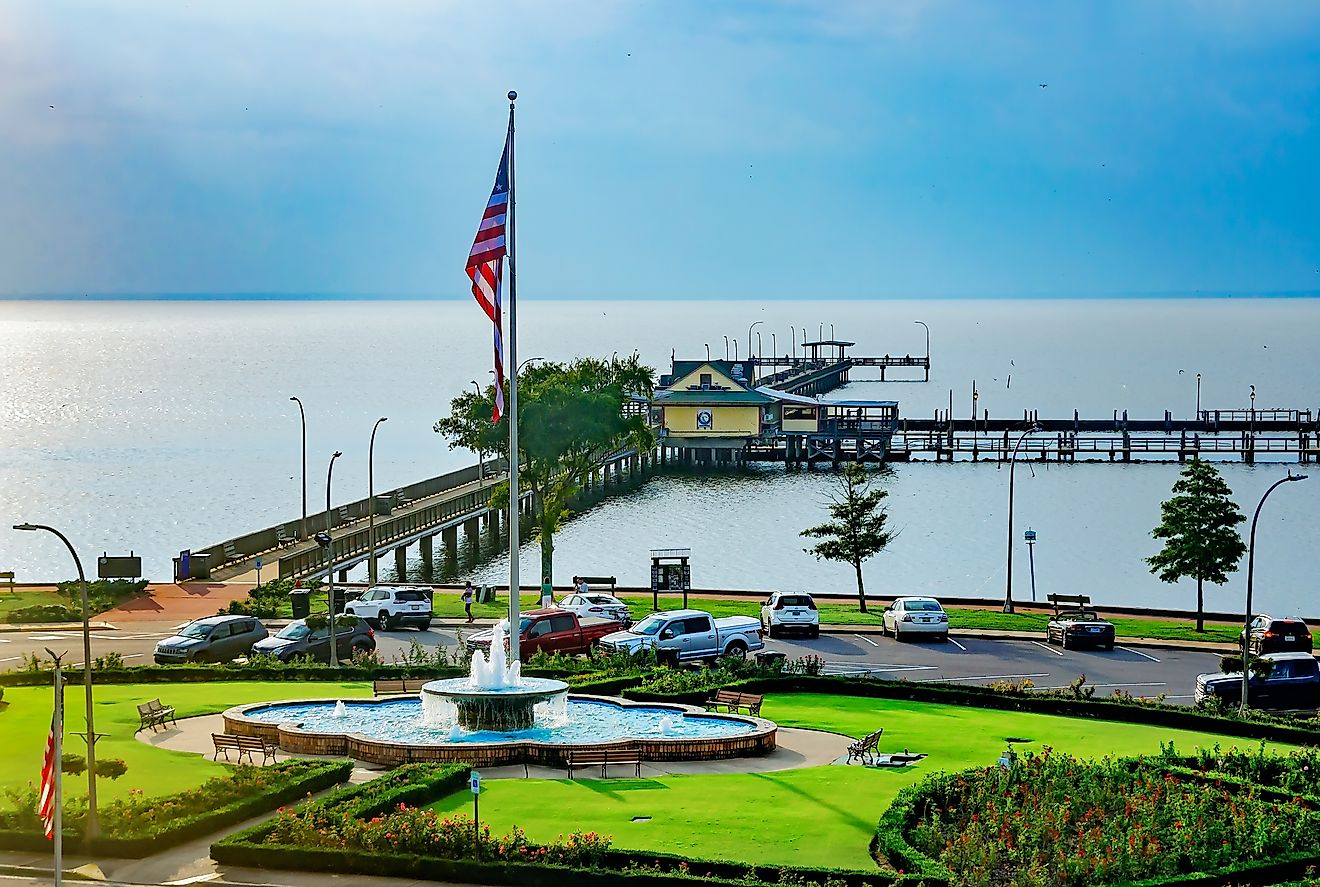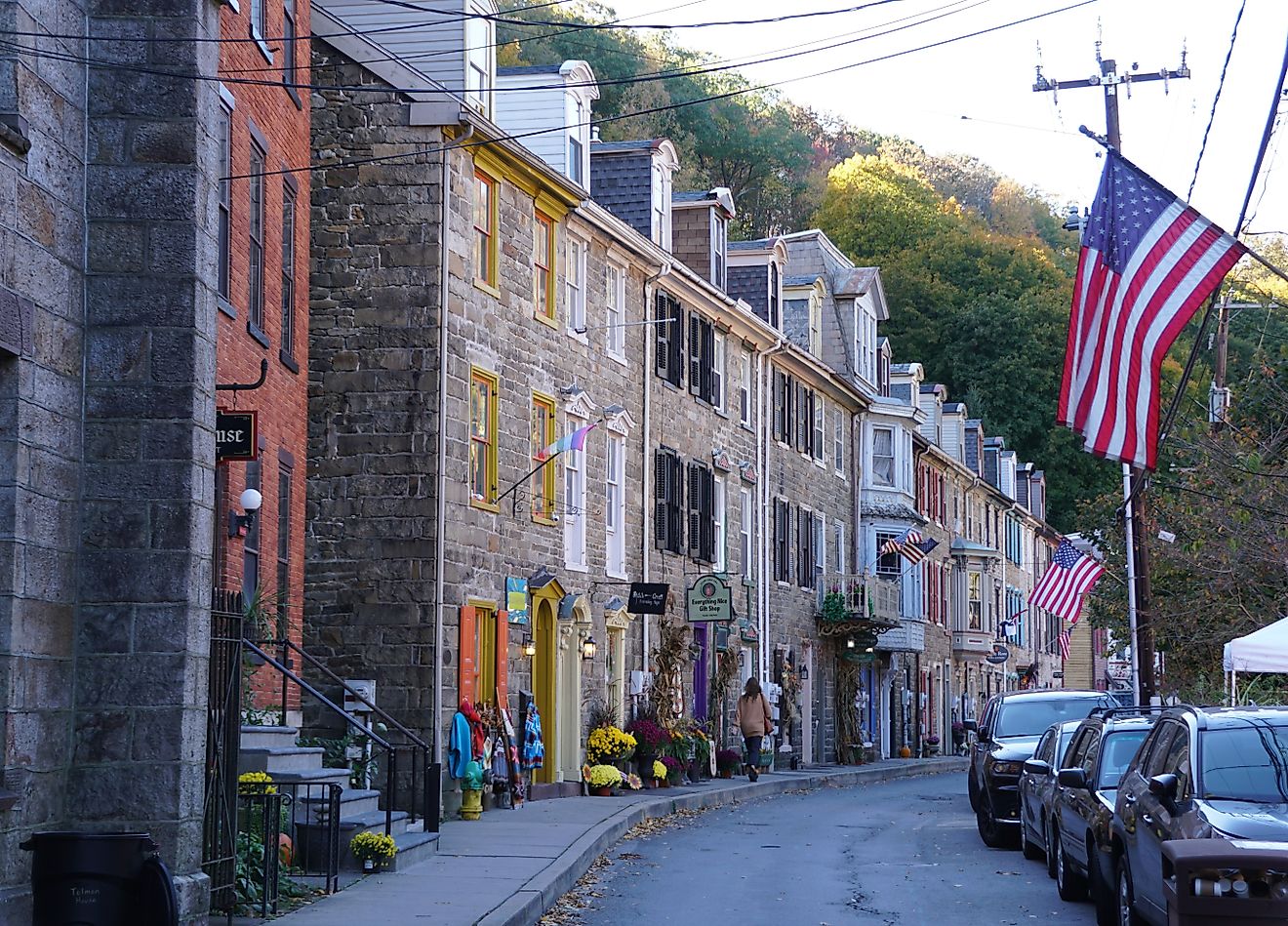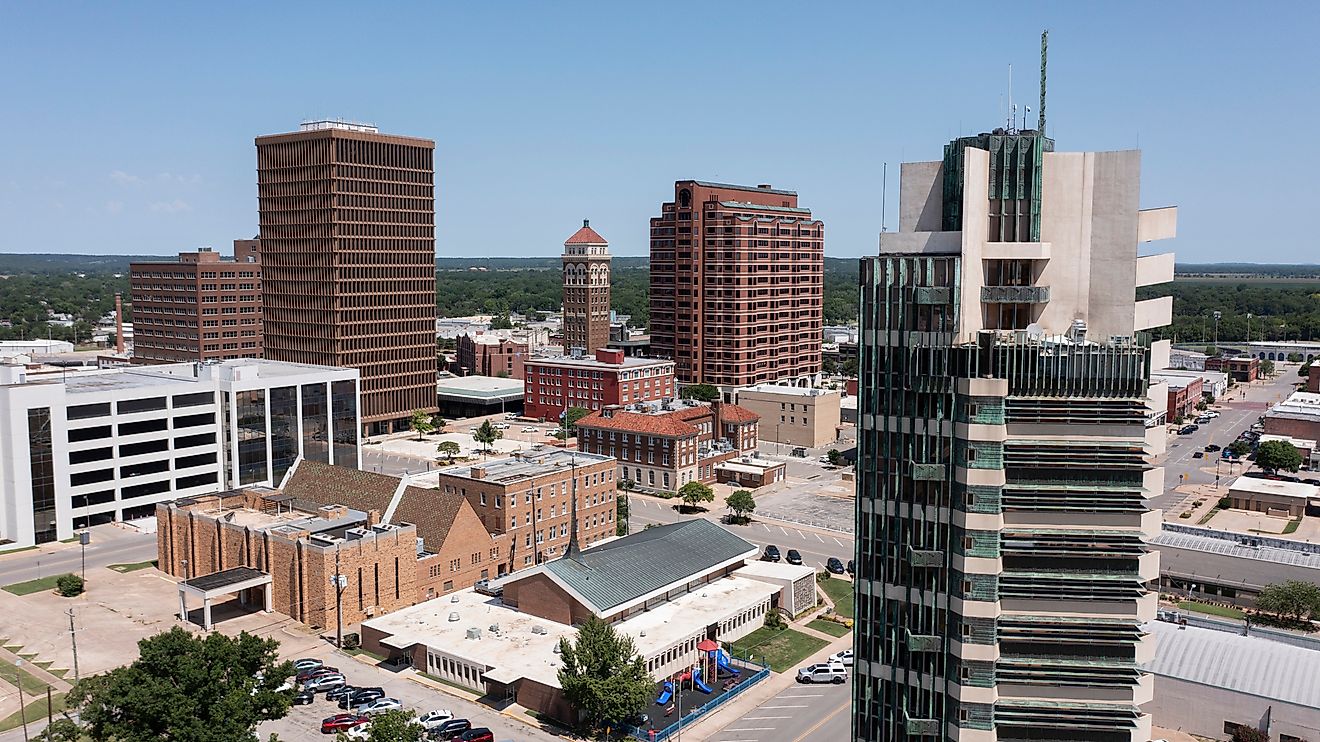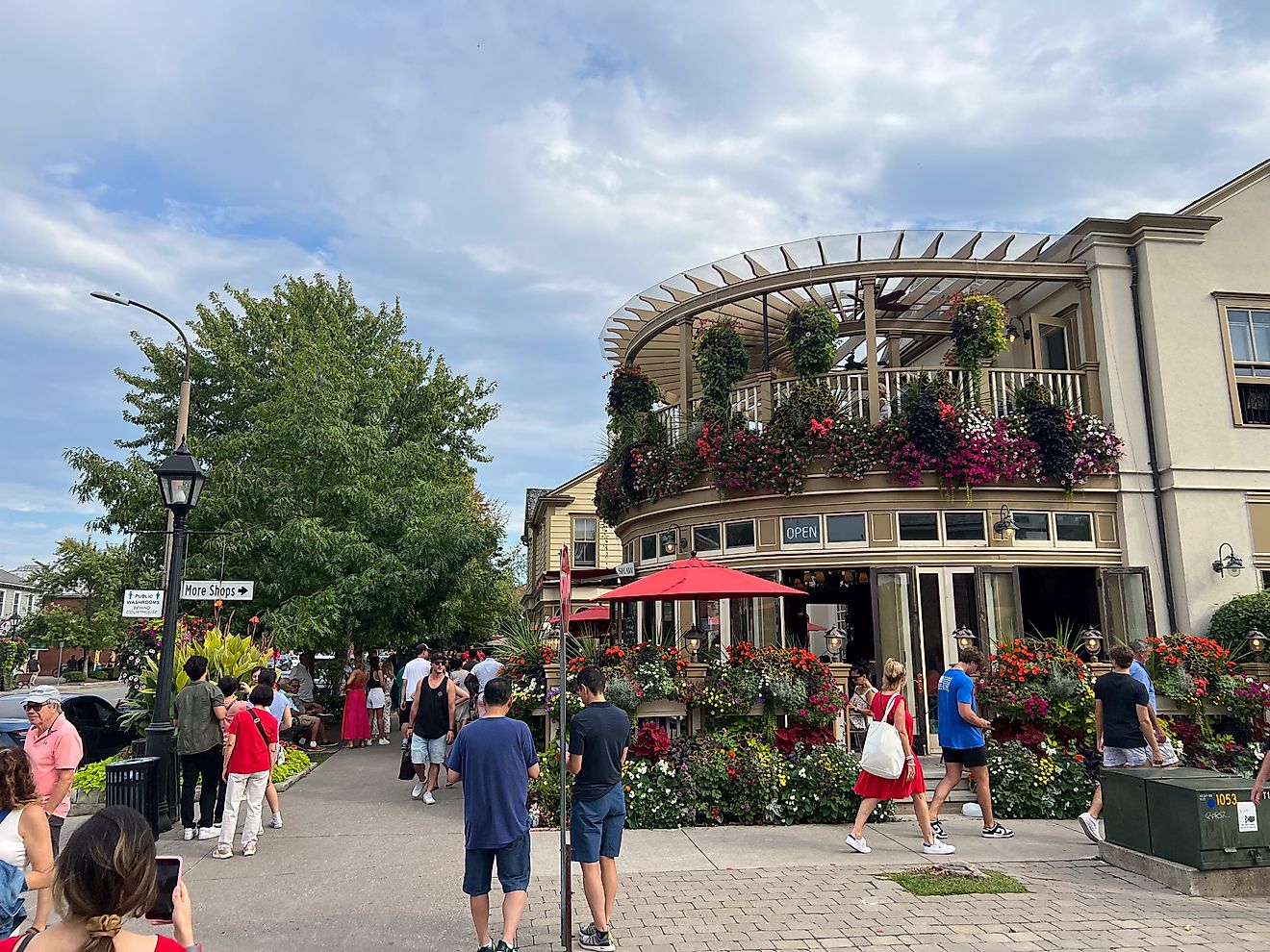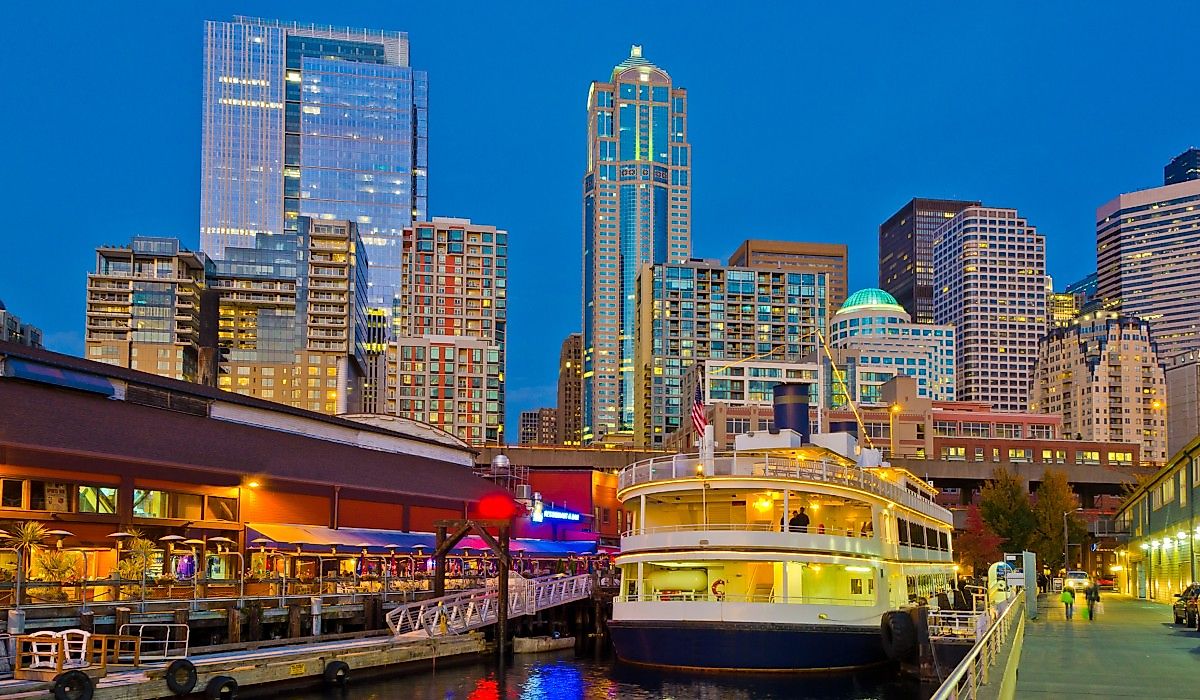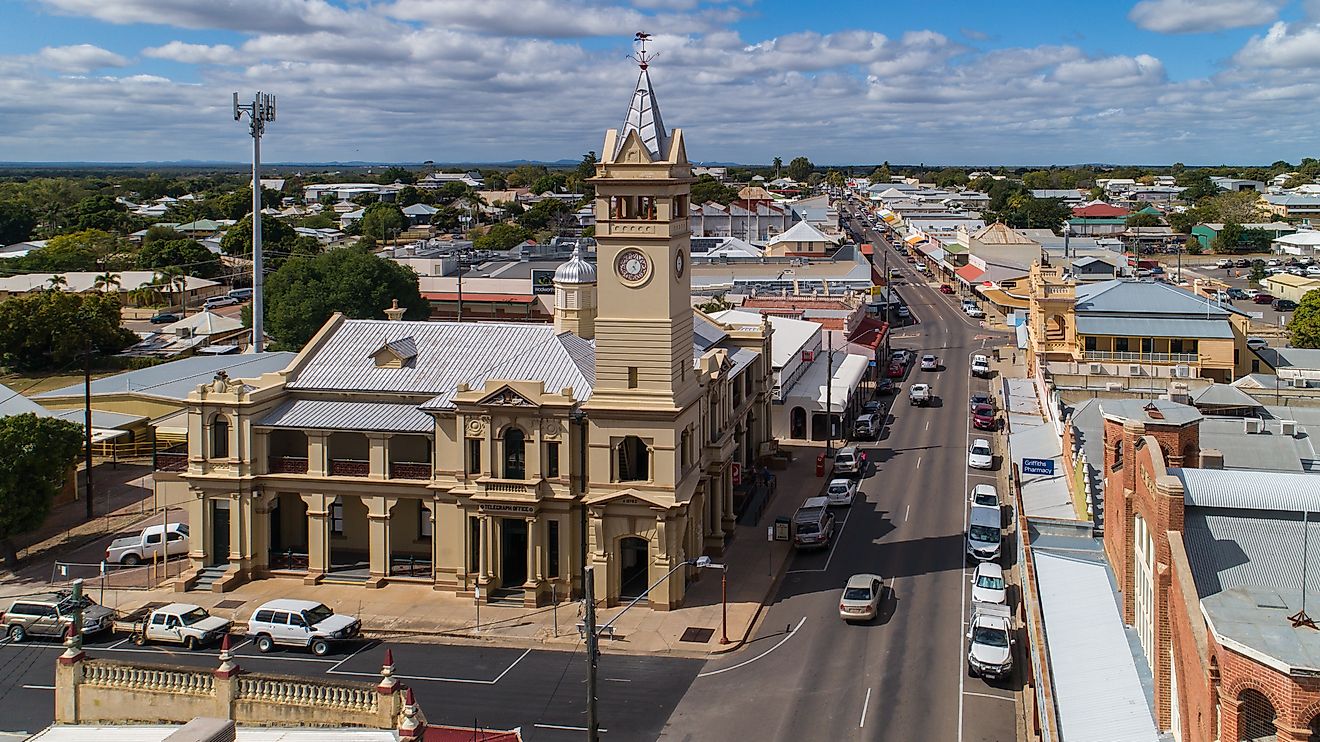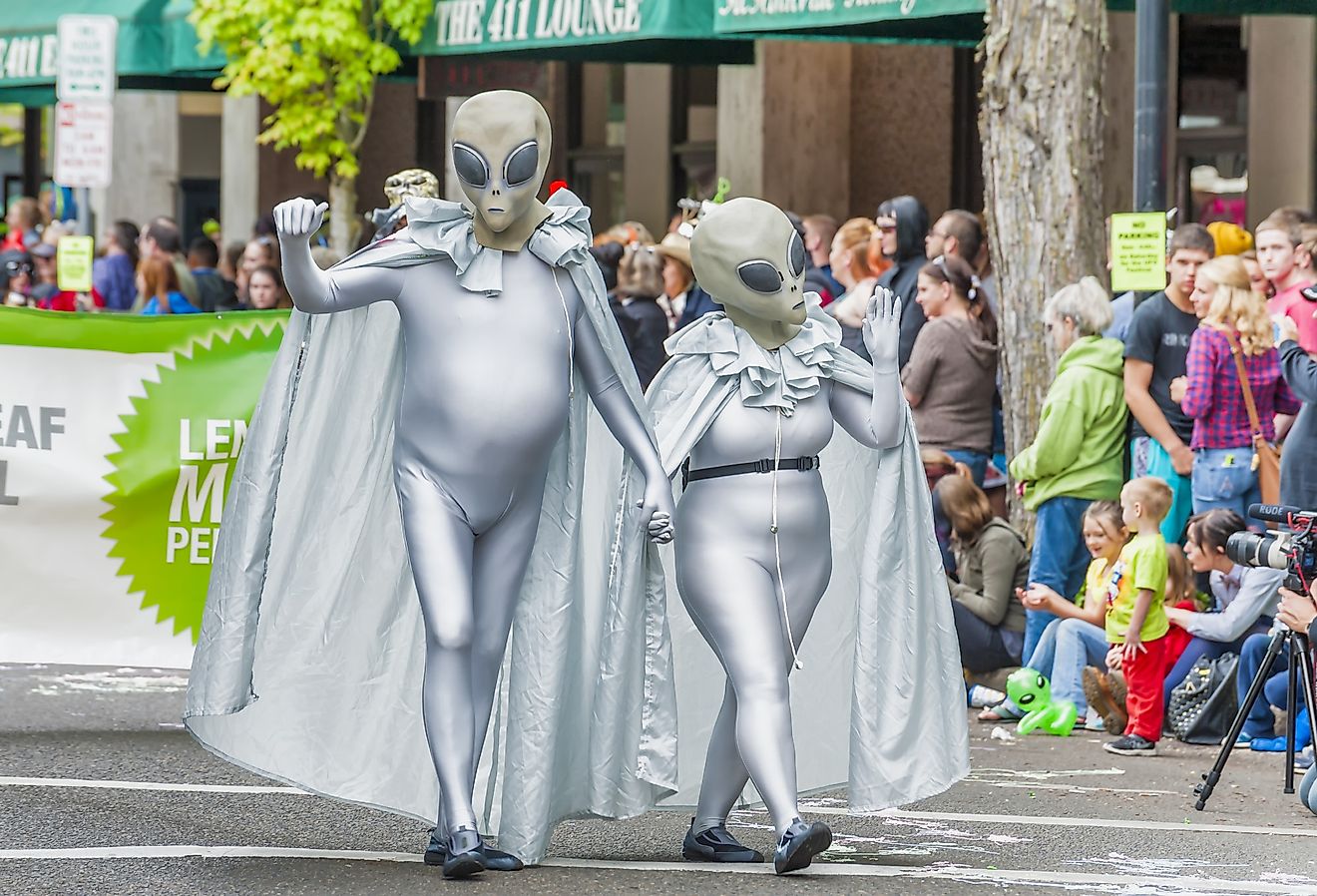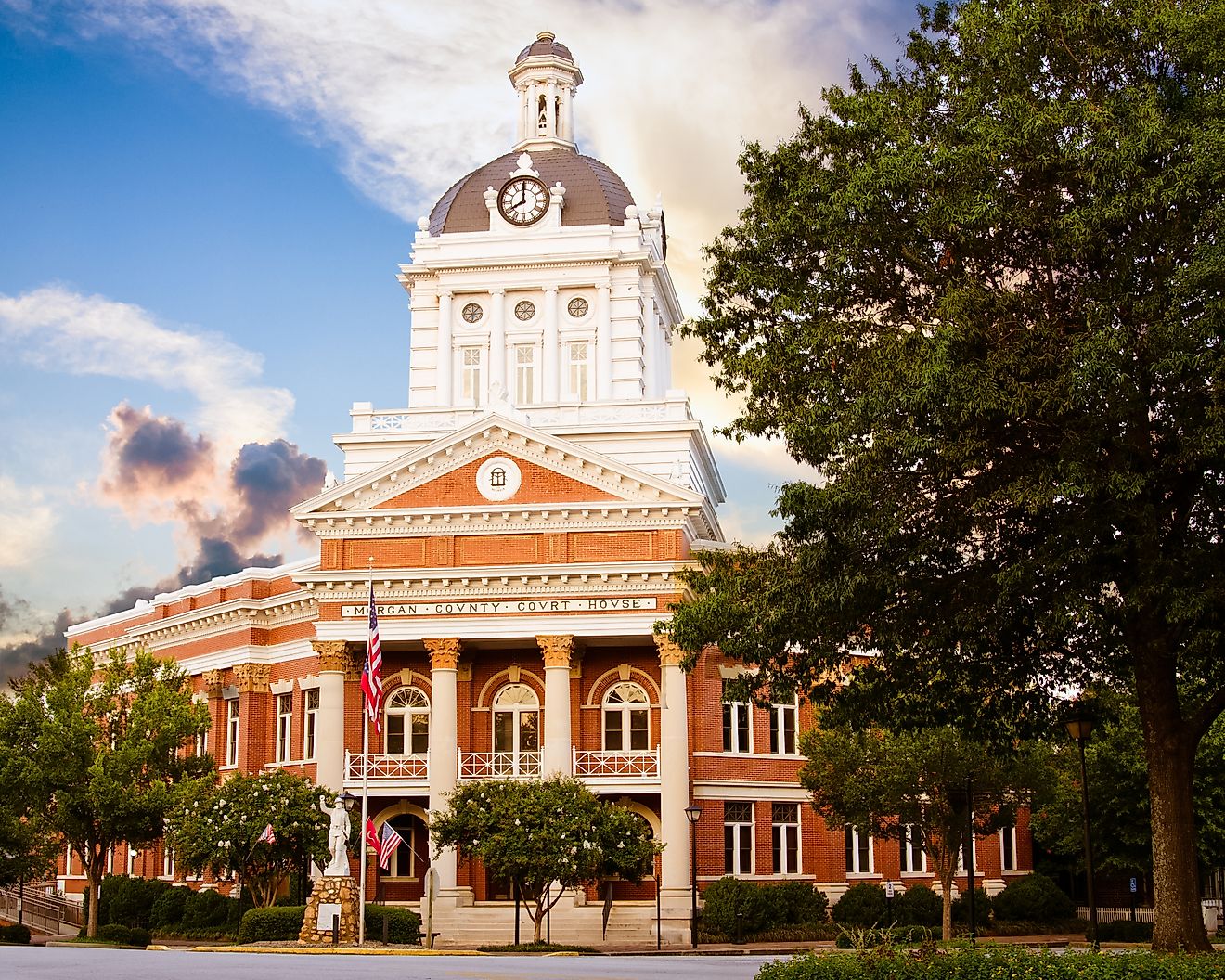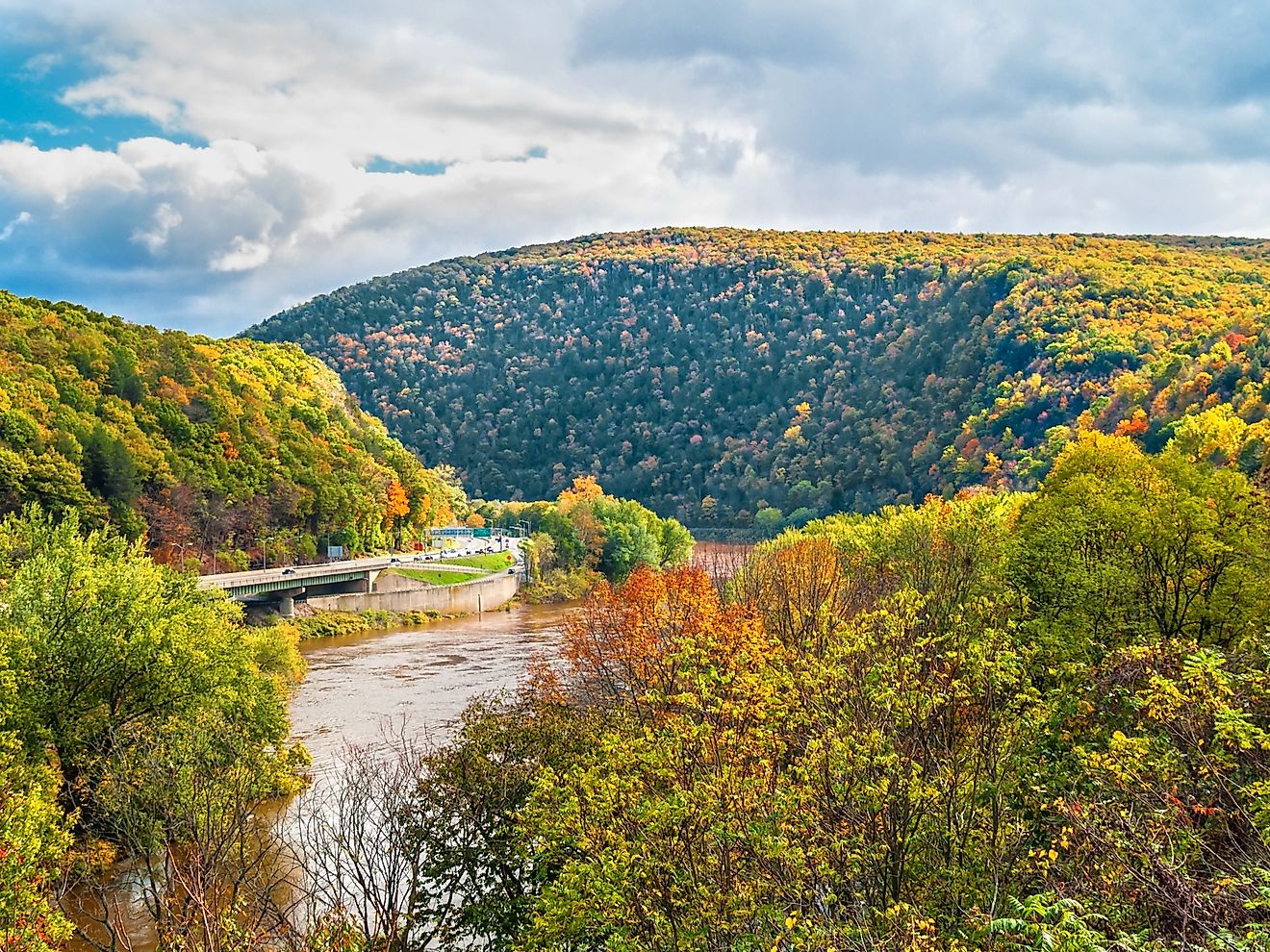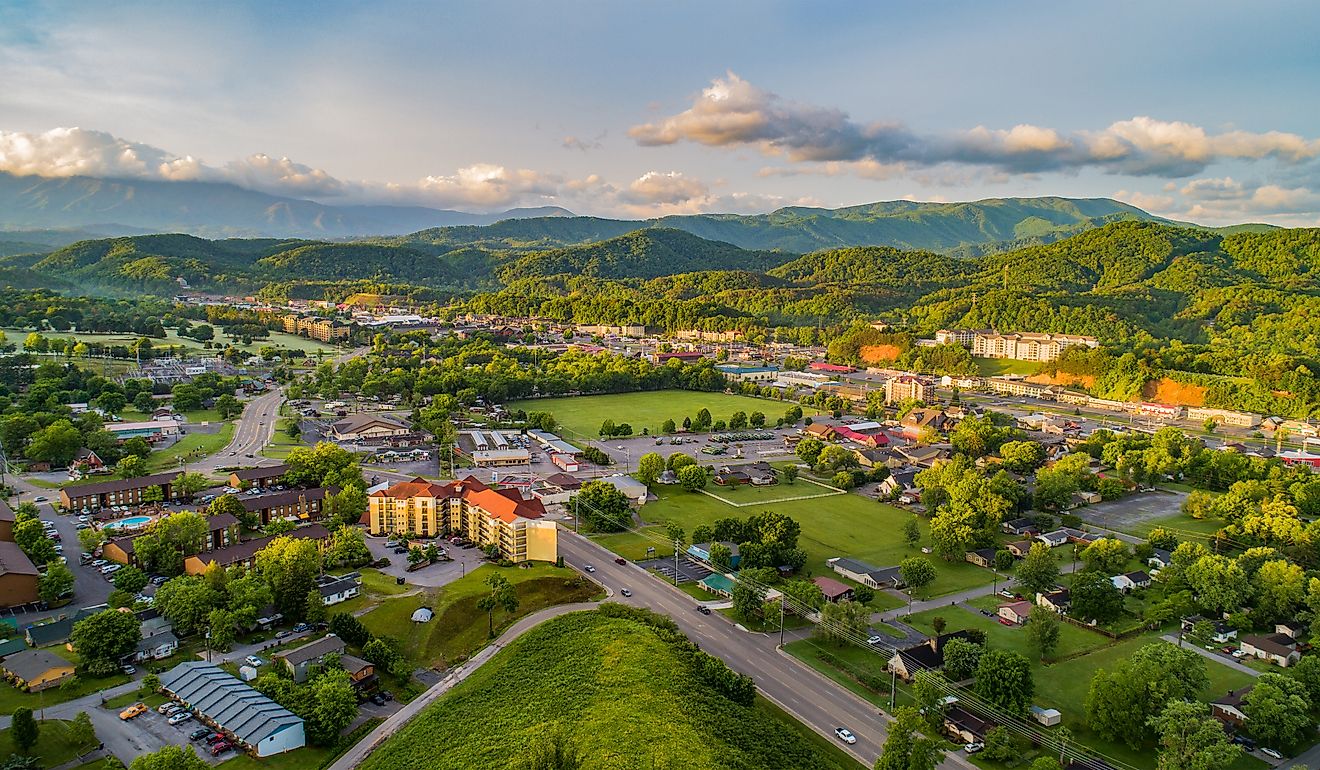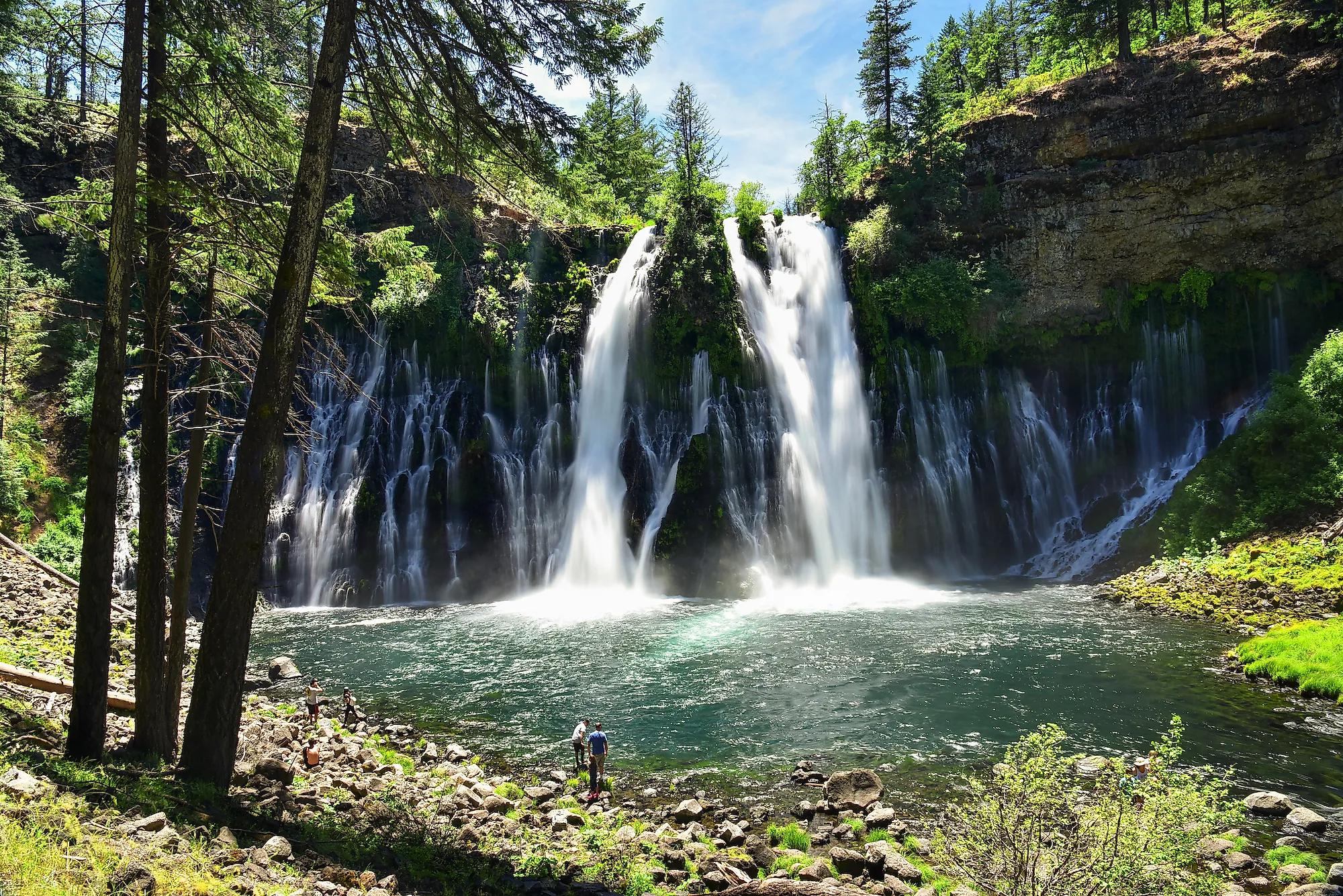
America's 10 Most Spectacular Waterfalls
Oftentimes, it is the surrounding scenery that magnifies the spectacular natural wonder that is a waterfall, that the United States is rich in. Coming in various configurations of cascades, free-falling waters, or rushing down the base surface, as if embracing the rock, these are the ten most spectacular waterfalls of the country.
- Bridalveil Falls, California
- Burney Falls, California
- Grand Canyon Falls Of Yellowstone, Wyoming
- Havasu Falls, Arizona
- Multnomah Falls, Oregon
- Niagara Falls, New York
- Shoshone Falls, Idaho
- Tahquamenon Falls, Michigan
- Union Falls, Wyoming
- Yosemite Falls, California
Bridalveil Falls, California
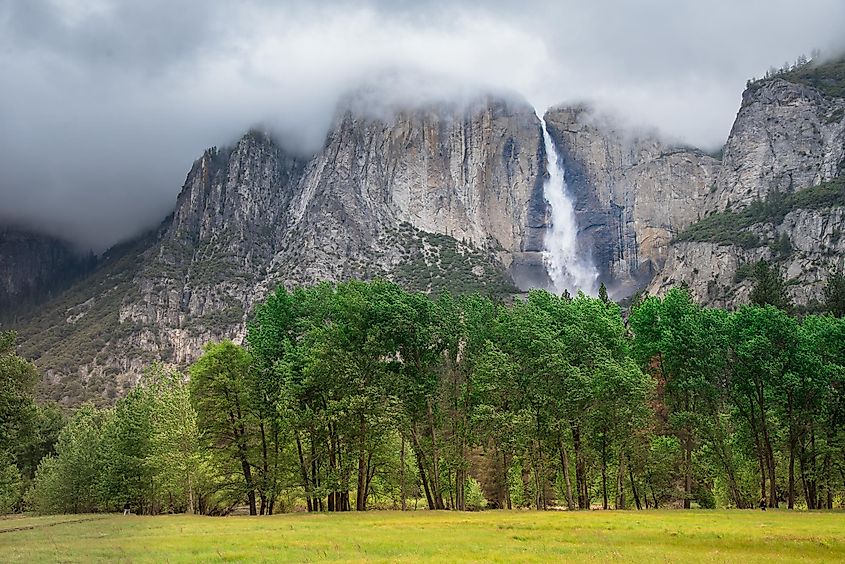
One of the Yosemite National Park's waterfalls, Bridalveil Falls is a favorite, providing a full-on spectacle of its 620-feet cascade gushing in a veil-like formation between giant rocky walls, year-round. Framing the Yosemite Valley, the landscape, has been described by John Muir and captured by Ansel Adams. The setting that keeps on giving, with the Bridalveil Trail leading to the falls being easily hike-able, is as if it wants to be seen and admired by all, young and old.
Upon exiting the Wawona Tunnel, the views from the Tunnel View point, of the waters plundering down into the forested valley is a revelation of a truly natural, naked beauty, with daily visitors agreeing that it is the most beautifully-situated waterfall they had ever witnessed. Moreover, sitting opposite to the El Capitan, one of the most famous rock facades in the world, the falls are also within the vicinity of other natural landmarks, such as the Half Dome, Sentinel Rocks and Cathedral Rocks.
Burney Falls, California
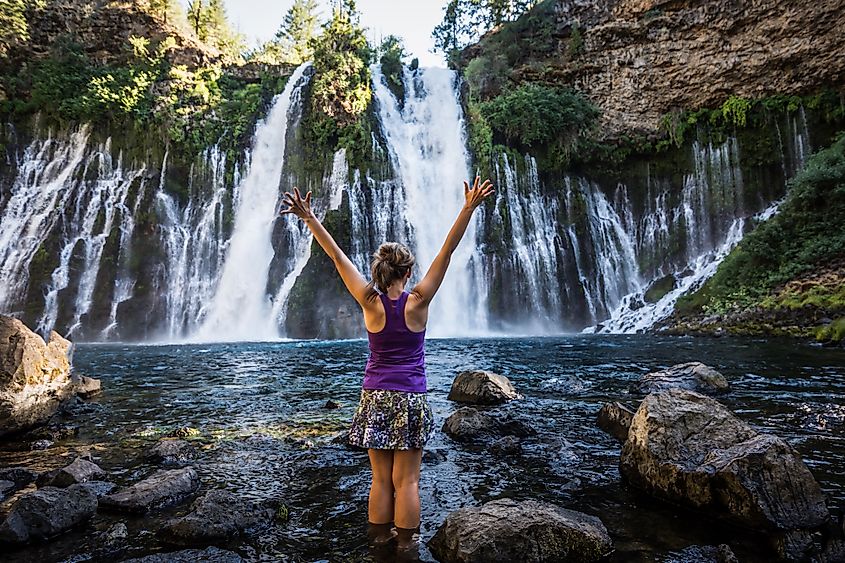
Sitting in close proximity to Mt. Shasta, in Northern California’s McArthur-Burney Falls Memorial State Park, this waterfall, which falls on itself, is one of the most unique in the United States, and in the world. With a 260 feet drop and an underlying line of springs squirting out of its upper two thirds, portion of the cliff, it also has an exceptionally deep and wide pool of magically clear and aquamarine blue waters. Being so versatile, the Burney Falls was dubbed by President Theodore Roosevelt as the eighth wonder of the world.
The daily dispel of some 100 million gallons of spring-fed water can be observed throughout the year with the waterfall being easily accessible by a simple quarter-mile hike to its base. One can also take the one-mile Burney Falls Loop Trail for various perspectives along the way. Set in an ultimate location for visitors, there are about dozen more falls in the vicinity, such as the 70-feet Potem Falls and the McCloud Falls of three tiers, set within the scenic Shasta-Trinity National Forest.
Grand Canyon Falls Of Yellowstone, Wyoming
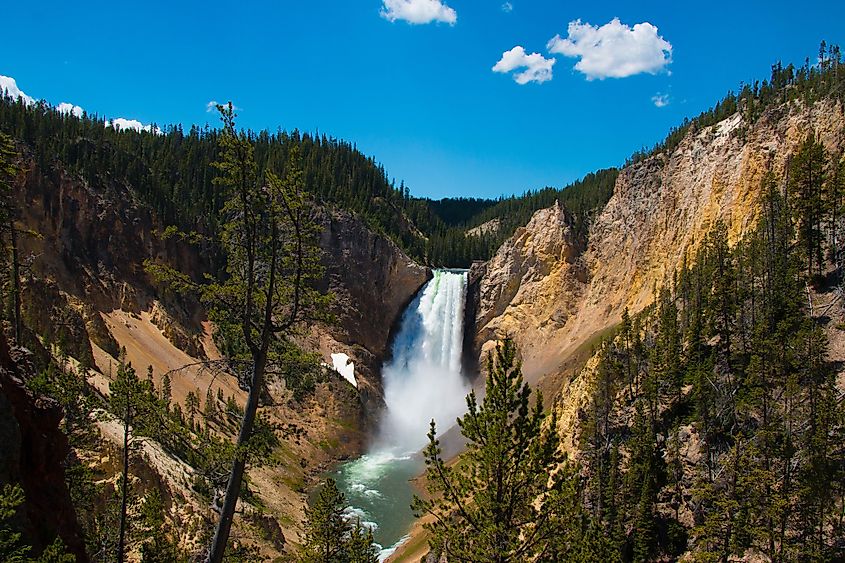
Framed by luscious greenery of the region, the Grand Canyon Falls is a combination of the Upper and Lower Yellowstone Falls, and the Crystal Falls. Free-falling in a thick veil of water over rock, they are a picturesque spectacle to behold, giving off a vibe of freedom. The scenery, filled with wildlife, is where one can truly connect with nature, especially if willing to hike up some rough 500 feet up and then back down, for the best views. Other optimal viewing spots include the platform at the Brink of the Lower Falls, Red Rock Point, Artist Point, and the South Rim Trail.
The 308-feet Lower Falls and the equally astounding 109-feet Upper Falls dropping off of the Yellowstone River receive 4 million spectators each year. Many that flock to the area, stay longer than a day-hike for the wild natural scenery, the colorful Grand Canyon, and the Yellowstone River behold other adventures to commence. Active tourists can explore the north and the south rims of the Canyon before returning to the falls and relaxing in its hot springs, also holding many predictable geysers.
Havasu Falls, Arizona
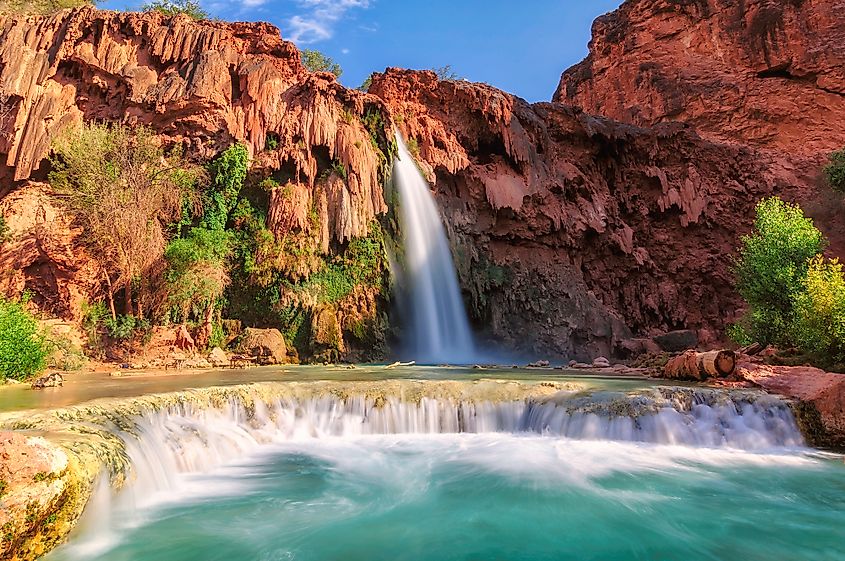
This striking fall of the Havasupai Indian Reservation, is a favorite for being situated in one of the most picturesque natural locations of the country. While lacking in size and power, the fall, flows every day of the year within a setting that invites visitors for the colors and the contrast of the rustic Grand Canyon to the iridescent waters. The light-reflecting stalactites and the blue-green hued travertine, deposited from mineral creeks, contrast the dark dams around the falls and the red cliffs of the Grand Canyon.
The unmatched sight of this limestone creek composure with the constantly changing flow and character of the falls are an oddity within a desert surrounding, worthy of lifelong memories. Even the rough eight-some mile hike from a remote trailhead at the Hualapai Hilltop to the scenic Supai village in the heart of the Havasupai Indian Reservation, is worth it, to experience this most, thought after spectacle.
Multnomah Falls, Oregon
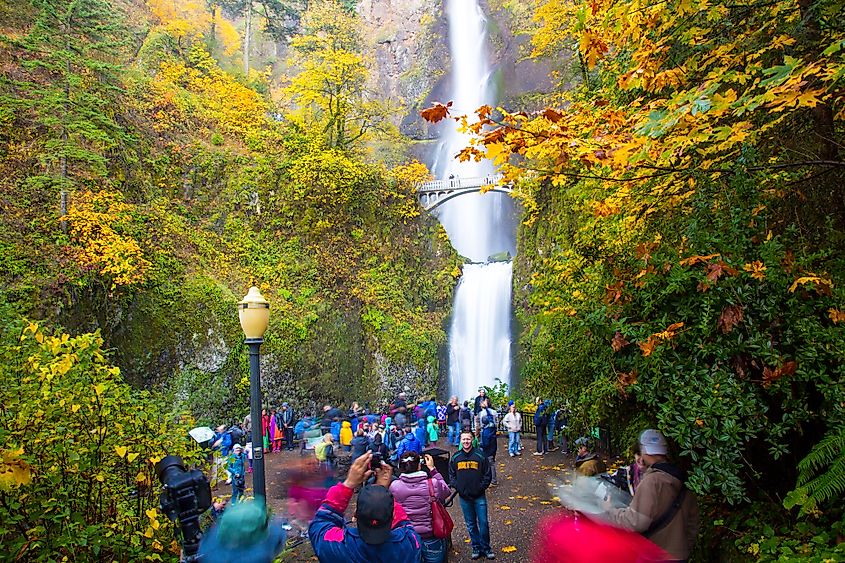
The famous Pacific Northwest underground water-fed Multnomah Falls is a tiered and irresistible sight of moody speed and volume flow falling down a basalt cliff. The viewing spot of this second-tallest waterfall in the US is best from the its upper-level section, where the scenery of the Columbian Gorge unfolds, unseen from the ground, and the Little Multnomah falls reveals itself. The scenic 5 mile Wahkeena Falls Loop Trail with the Multnomah and Wahkeena Creek flowing through the canyons offers a walkaway amongst some towering evergreens with other falls on the way, including the Fairy Falls and Wahkeena Falls.
Made of three sections, the upper falls are 542 feet cascading into the 69-feet middles, falling into the 9-feet lower falls, set within the lusciously green, forest-framed setting. This iconic fall of the long Columbia River Gorge, drops its waters for 620 feet into many pools, 365 days of the year, and easily is accessible. Benson Footbridge on the trail leading to the falls offers an access to the lower cascade, while following the trail further, will bring one to the upper portion.
Niagara Falls, New York
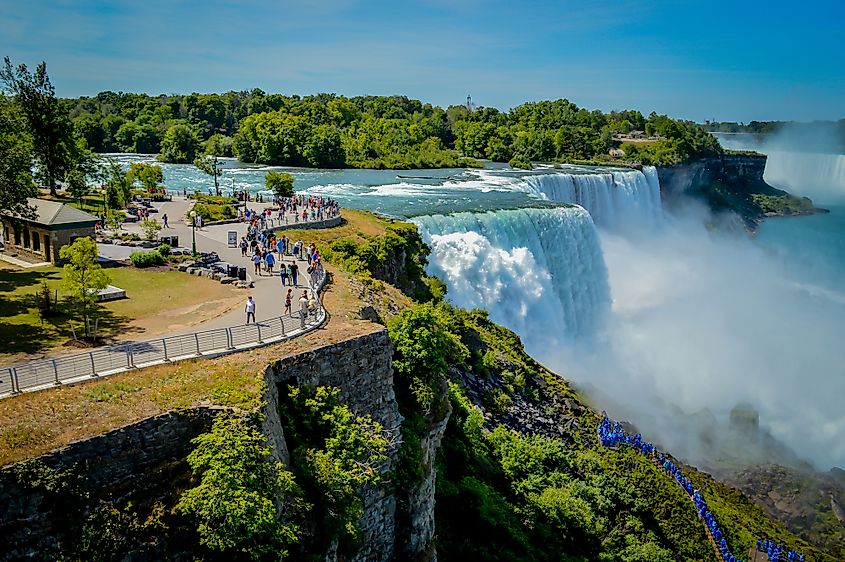
Sitting near Buffalo, this border-set waterfall, shared between Canada and the United States, is the most powerful, as well as the largest and most popularly visited by tourists from all over the world. As one of the top three waterfalls in the world, this ample natural wonder is comprised of three different falls, the Horseshoe Falls, the American Falls, and the Bridal Veil Falls.
With an average of 758,000 gallons of water dispelled every second, one will hear the powerful roar from far away, before even seeing it. The Horseshoe or the Canadian Falls are the uppermost, with the other two being downstream on the US side of the river. The waterfall has tons of attractions, including lighting up at night, a glass elevator, as well as the Maid of the Mist boat tour through the waterfall whitewater and the surrounding massive rocks.
Shoshone Falls, Twin Falls, Idaho
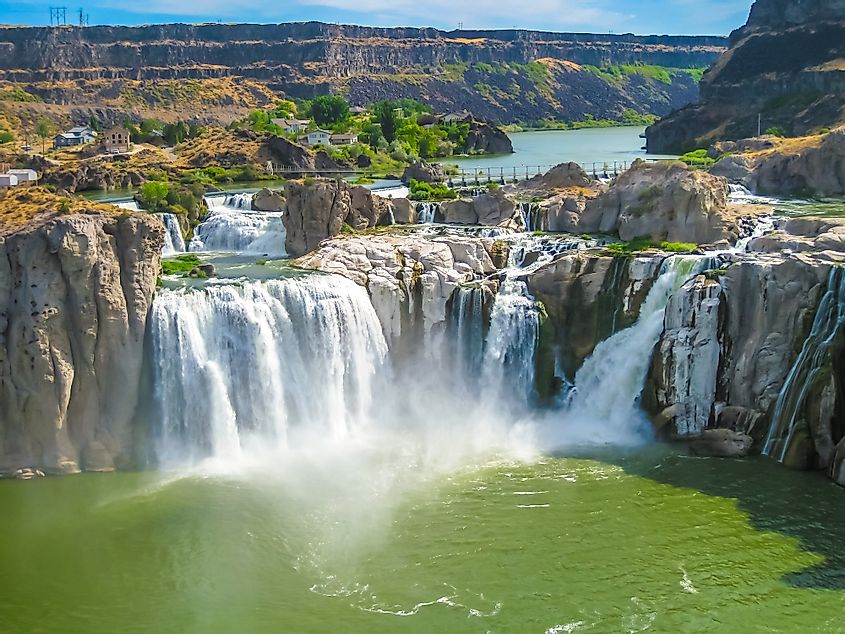
Taking off from the Snake River, this 212 feet long and 900 feet wide waterfall, taller than Niagara, is best seen in spring and early summer, when the melting snow waters have added to its full beauty. Its most ample flow of meltwater reaches some 20,000 cubic feet per second, and one can always check the live feed for the optimal visiting time.
Being called the "Niagara of the West", it is the largest natural waterfall in the United States, with the surroundings almost as astounding as the falls themselves, containing mesmerizing basalt canyons and ancient waterways at each step. As part of the Twin Falls, located within the Dierkes Park, the Shoshone Falls give the eyes and the mind a rest whilst one is relaxing on a picnic, or taking a stroll along the many walkways.
Tahquamenon Falls, Michigan
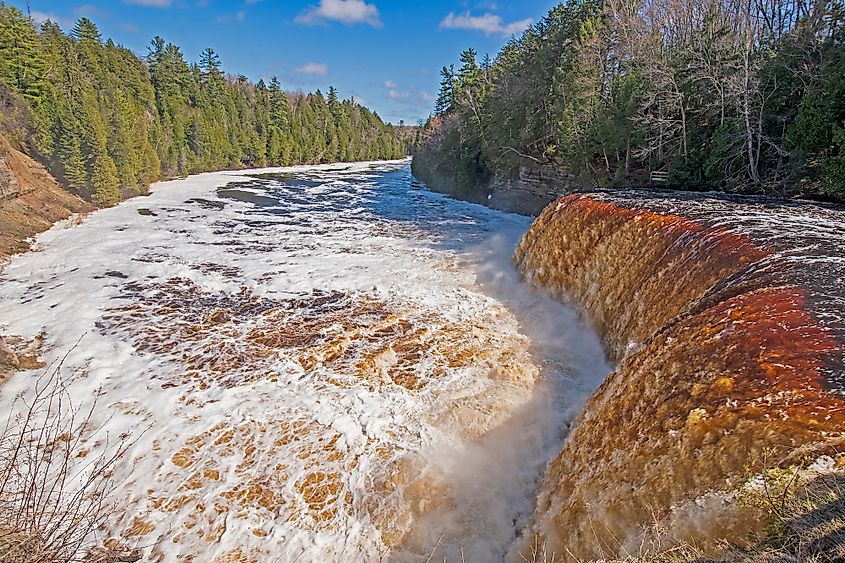
This grand fall starts off from the Tahquamenon River, as it courses its way into the Upper Falls composing 50 first feet of this wide spectacle. Some miles downstream, the river, once again dispels its waters over the edge, creating the Lower Tahquamenon Falls, with a triple-stair section in between offering ultimate spots for photographers to capture their shots. Sitting in a scenic forest that is also a park, there are also paved paths with many stops to obtain the ultimate view.
The united five lesser declines of water that make up the Lower Falls, see off the river's flow that continues downstream to flow into Lake Superior. For its sheer breadth falling over the precipice of a classic block-shaped granite wall, the Tahquamenon Fall is one of the most stunning in the world. The surrounding scenery adds on, with the iconic Pictured Rocks and the yellowish-brown hue of the river, this true natural paradise can be observed from the river banks, or from the brink itself.
Union Falls, Wyoming
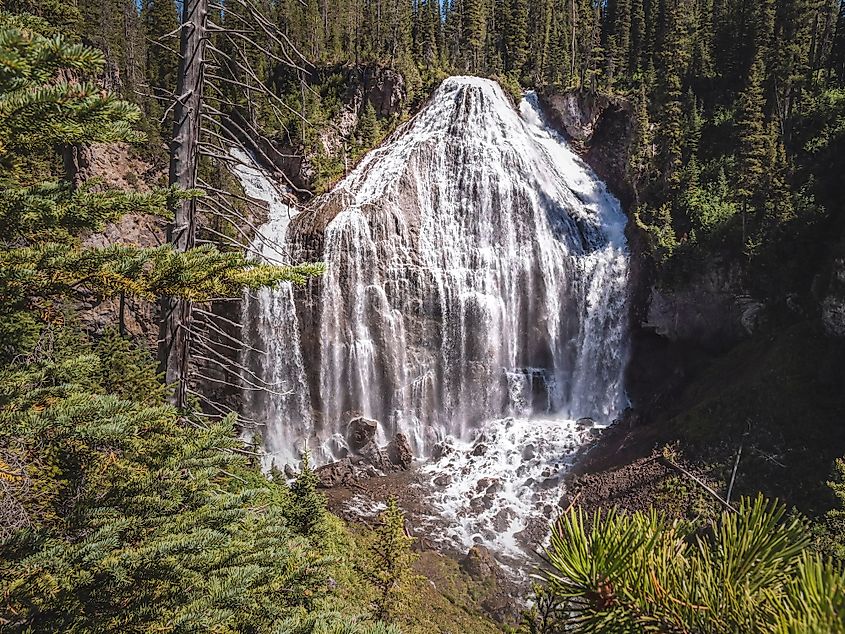
Located within the Yellowstone National Park, albeit difficult to reach, this dropping 260 feet tall waterfall is a real jewel of Wyoming. Set within bears' habitat requiring some 15-mile round-trip hike of rough hill-climbing and a river fjord on the way, the ultimate reward are the Union Falls, the delicate grace of which, go unmatched by any other waterfall of the country. From a front-on perspective, the fall appears to be a giant portal door, entering through which, will take one to another world.
When looking at the waterfall sideways, it is a glamorous spectacle of water, rushing down in a thin wide veil to embrace the huge boulder underneath, with a separate narrow gush of water on its left-hand. Aside from obtaining the satisfaction of the adventure and the well-earned spectacular sight, there is a thermally-heated creek in close proximity at the Ouzel Pool, being optimal for the sore muscles before commencing the hike back.
Yosemite Falls, California
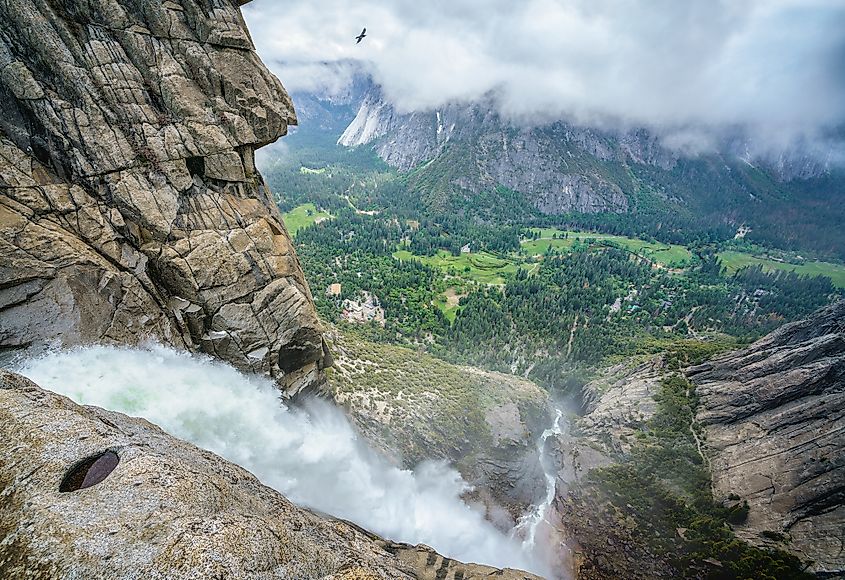
This majestic waterfall is a crown jewel of the Yosemite National Park as a 2,425 spectacle of cliff-diving waters, and one of the tallest waterfalls in the world. Easily accessible by driving or hiking, one should note not to visit mid to late summer, when the waterfall is dry. As a grand gushing force, it runs out of the wintertime meltwater supply rather quickly due to its unmerciful granite drainage system. Composed of three different falls, with the Upper Yosemite Fall, at 1,430 feet being the tallest, flowing into the middle cascade, and the 320 feet Lower Yosemite Falls, altogether it is 2,245 feet in height.
Best viewing places of this remarkable natural energy, are from the Yosemite Village and the Yosemite Lodge, although most spots on the Yosemite Valley also offer observation points. One can also venture on an all-day hike for a close-up of the giant, take a one-mile round-trip to the Lower Falls with an unforgettable sight of the escorting Upper Falls cascade, or a two mile round-trip to the upper level of the Lower Falls, although the views from there become obstructed.
Waterfalls come in all shapes and sizes from being full-bodied, thin, and thick, to falling at different rates depending on their structure, and dispelling various amounts of water. Although they are nothing more than rivers letting out waters to rush over a precipice, the magnificent cascades are a force of nature that continue to amaze for their sheer power and beauty.
